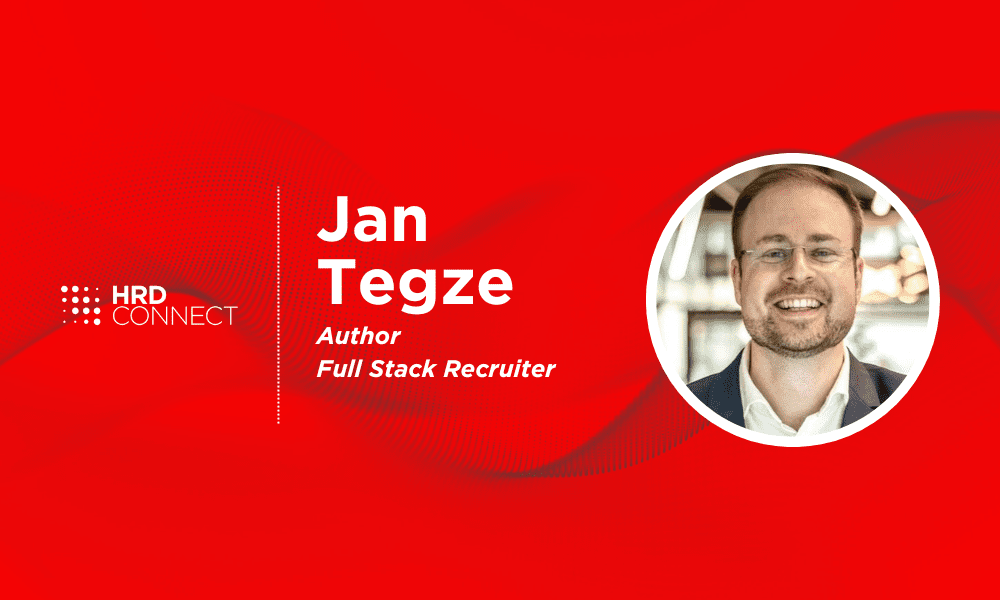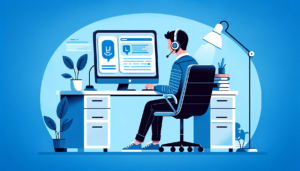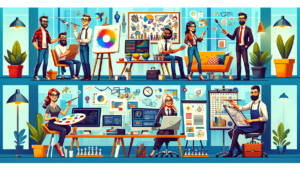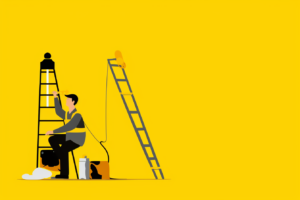How to drive competitive talent advantage through continuous L&D
- 5 Min Read
As technological advancements influence our work and the job market evolves rapidly, providing your team with a continuous L&D program enhances productivity, increases employee retention rates, and sets your organization apart from the rest.
- Author: Jan Tegze
- Date published: May 15, 2023
- Categories


Establishing continuous L&D cycles for talent acquisition (TA) teams is vital for any company seeking to hire and retain the best talent available. With the rise of digital transformation, artificial intelligence (AI, ChatGPT), and other technological advancements, HR and TA leaders must provide continuous learning opportunities for their teams to ensure that they are not only equipped to meet the needs of the company but also remain competitive in the field that is constantly evolving.
The rapid evolution of AI tools like ChatGPT is redefining the modern recruitment environment, methods, and processes. This creates pressure on leaders to stay up to date with the latest techniques and tools to remain effective.
The current market environment has an impact on company budgets. This only adds further challenges for leaders to implement new tools into the process. Failure to keep up with trends could also result in decreased productivity, lower quality of work, and the loss of remaining recruiters to competitors who offer the latest tools and technology to them.
Investing in your team and continuous L&D is the smartest investment you can make
While purchasing new tools for your team can be a considerable investment, waiting for budget approval for several months or even a year can result in lost time. You may even be denied the budget altogether. To avoid this, there are steps you can take right now to begin exploring new tools, like ChatGPT, which is currently gaining popularity.
Encourage your team to create a free ChatGPT account on the OpenAI site. Enable them to test the tool’s capabilities and gain a better understanding of how it works. Additionally, you can facilitate regular sharing sessions where the entire TA team can share information about how they are utilizing these tools in real life. Everyone can benefit from collective knowledge and be motivated to explore new tools for themselves.
When considering the costs of tools like ChatGPT Plus, it’s important to keep things in perspective. The cost for one ChatGPT license is $20 per month. For a team of five, the annual cost would be $1,200. While it may seem like a large amount for those with a limited budget or uncertain ROI, it’s important to weigh all the potential benefits that relate to these tools. For example, imagine that your team could increase their productivity by 20%, improve the response rate of their inMails, and hire more people as their communication will be better than before.
Considering this potential boost in productivity, are the costs associated with ChatGPT Plus truly too high?
Stay ahead of your competition with continuous L&D
A lack of understanding of new tools can lead to slower hiring times and missed opportunities for companies. That’s why every organization needs to develop a proper training plan that includes both formal (seminars, workshops, and certification programs) and informal methods (mentoring, coaching, job rotations, and cross-training) of training. A well-developed plan bridges the skills gap and improves the TA team’s overall performance.
By implementing a continuous learning plan tailored specifically for your TA team, you can not only increase employee engagement but also improve retention rates and enhance the overall performance of the organization.
Here are some strategies and methods for establishing continuous L&D as a part of your TA plan.
1. Utilize technology and digital learning
Technology is rapidly changing the way we work and learn. ChatGPT and AI tools are forcing organizations to change their learning methods. They must adopt digital learning to keep pace with this rate of change. By providing access to e-learning platforms (external and internal ones), and other digital courses, you can offer your team a convenient and efficient way to continuously develop their skills and knowledge.
2. Encourage cross-functional training
Cross-functional training works if they are done properly. They provide employees exposure to other functions within the organization. For example, recruiters working with the marketing team could learn more about the better way how to write LinkedIn posts. Cross-functional training helps them develop diverse sets of skills and knowledge. This approach is especially useful for TA teams that interact significantly with other departments, such as Marketing or IT. It ensures their alignment under a mutually beneficial objective.
3. Develop a mentoring program
Pair experienced employees in your organization with new and early-career TA team members to provide guidance and knowledge-sharing. Such programs encourage continuous learning as it helps team members learn best practices from each other. This leads to better performance and growth opportunities.
4. Assess and measure progress
It is helpful to track progress and measure the effectiveness of your learning and development program to determine if it’s benefiting your organization. Gathering regular feedback is essential to ensure that it provides the expected results. Key performance indicators may include improved retention rates, higher employee satisfaction, and improved productivity.
Continuous L&D is key to coping with future technological advancements
It is crucial to recognize the positive impact and value that continuous learning and development have on your teams. As technological advancements influence our work and the job market evolves rapidly, providing your team with a learning program that keeps them up to date with the latest knowledge and tools is essential. Prioritizing learning opportunities for your team is not just necessary. It is a strategic decision that can determine the success of your entire organization. Moreover, it serves as an excellent way to retain your team members.
Organizations that prioritize comprehensive training and development programs are the ones that remain competitive and yield better results. Ultimately, taking the initiative to close skill gaps within your team can enhance productivity, increase employee retention rates, and set your organization apart from the rest!
________________
Are you struggling to find the right talent for your organization? Look no further than Jan Tegze’s ‘Full Stack Recruiter.’ As a TA or people leader, establishing a recruitment strategy is essential in attracting and retaining top talent. This book offers practical tips and advice for every step of the recruitment process.








